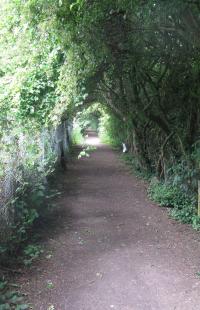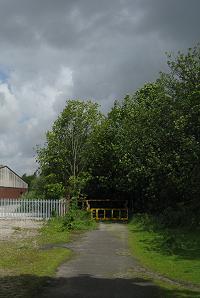Cyclists' Home Page | Davenport Station | Cycle Stockport | Stockport Council Cycling pages
These supplementary cyclist's pages are for everyone who enjoy cycling around the south Stockport area, and especially those who attend the Stockport Council Cycle User Group meetings, which are freely open to all. New faces are always welcome.

Note: this is a strictly unofficial site, not connected with or approved by Stockport Council or Northern Rail.
Created and compiled by Charlie Hulme.
Cyclists and the Defra Rights-of-way consultation
18 May 2012We have been campaigning for some considerable time for Stockport Council to officially allow cycling on suitable public footpaths (see 'Lost Cycling Routes') so they can be included in the Cycling Map, so we were interested to hear of some stirrings of Government action on this in the form of a consultation by Defra (The Department for Environment, Food and Rural Affairs) on 'Improvements to the policy and legal framework for public rights of way' which is featured on their website, with a closing date of 6 August 2012.
I've been having a look at this, and the Natural England Stakeholder Working Group report 'Stepping Forward' to which the consultation is a response. (Available as a PDF on the Natural England site).
I quote below the part of the texts (that I can find) about cycling. Much of the Defra document is concerned with the problem of right-of-way which may exist are are not yet recorded, and how to speed up the process before the cut-off date of 2026 - I also get the feeling that they want to make it easier for developers to get rights of way removed or diverted.
The Natural England document says:
7.7 Cycling is very much a part of the sustainability agenda, and this sector has seen hugely successful improvement schemes in recent years. You might expect routes for cyclists to be recorded on the definitive map and statement – a record of non‐motorised rights of way – but they are not. Currently where a footpath is converted into a cycle track, it gets removed from the definitive map and statement, and that alone is sufficient to draw objections. It would be strange to record a cycle track as a bridleway – meaning that cyclists would need to give way to horse riders – or as a restricted byway. Equally it is a cause of resentment that horse‐riders have no right to use cycle routes in the same way that cyclists may use bridleways.
In principle, the Group feels that this separation is looking outdated: cycle routes should be recordable on the definitive map and statement, and where appropriate should be available for use by all non‐motorised users. This idea and the whole issue of how cycle tracks are created require further thought and development, so that Government can consult on it in due course.
Proposal 31: A review should be carried out of how routes for cyclists could best fit in with the highways network to form an integrated whole, and provide for usage by all non‐motorised users.
Defra's response In total) is:
Defra proposes to collaborate with all relevant stakeholders to look at the best way of providing ‘off-road’ routes that benefit all types of non-motorised traffic, including both cyclists and equestrians, and that also improve the cohesiveness of the network.
RightsofwayReforms@defra.gsi.gov.uk
Here is a copy of my reply:
Dear Defra team,
I was very interested to read your consultation on Right of Way Reform, and in particular I would like to comment on the subject of Routes for Cyclists.
In my town - Stockport - there are a number of routes, mostly current or former farm tracks, which are used every day by cyclists as very good ways to get around without using busy roads such as the A6. However, on the definitive map and OS maps they appear as Public Footpaths and therefore the Council is unwilling or unable to show them on the Cycling Map which is published as one of a set intended to encourage cycling across Greater Manchester.
I have asked Councillors and Officers many times how this situation can be rectified, and it appears that the procedure is very complex, and involves research in Council archives which I would have to do myself as the Council must be 'seen as impartial.'
I get the impression that the Council rights-of-way department is reluctant to address the matter because of the possible objections, and the fact that a route cannot be declared a bridleway unless suitable for horses.
I would very much encourage the development a simple procedure by which the Council can establish a strategic network of such re-classified routes, based on criteria such as sufficient width and fencing from farm land. In the case of new housing development, any existing public footpaths should be re-defined and made suitable for use by cyclists as a matter of policy.
Such a strategy would offer a simple way to make cycling safer and more attractive to people who perceive main roads as difficult and dangerous.
Yours Faithfully,
Charlie Hulme
To the Davenport station home page

